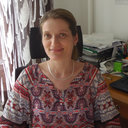Substrate promiscuity of RdCCD1, a carotenoid cleavage oxygenase from Rosa damascena.
Kľúčové slová
Abstrakt
Several of the key flavor compounds in rose essential oil are C(13)-norisoprenoids, such as beta-damascenone, beta-damascone, and beta-ionone which are derived from carotenoid degradation. To search for genes putatively responsible for the cleavage of carotenoids, cloning of carotenoid cleavage (di-)oxygenase (CCD) genes from Rosa damascena was carried out by a degenerate primer approach and yielded a full-length cDNA (RdCCD1). The RdCCD1 gene was expressed in Escherichia coli and recombinant protein was assayed for its cleavage activity with a multitude of carotenoid substrates. The RdCCD1 protein was able to cleave a variety of carotenoids at the 9-10 and 9'-10' positions to produce a C(14) dialdehyde and two C(13) products, which vary depending on the carotenoid substrates. RdCCD1 could also cleave lycopene at the 5-6 and 5'-6' positions to produce 6-methyl-5-hepten-2-one. Expression of RdCCD1 was studied by real-time PCR in different tissues of rose. The RdCCD1 transcript was present predominantly in rose flower, where high levels of volatile C(13)-norisoprenoids are produced. Thus, the accumulation of C(13)-norisoprenoids in rose flower is correlated to the expression of RdCCD1.



